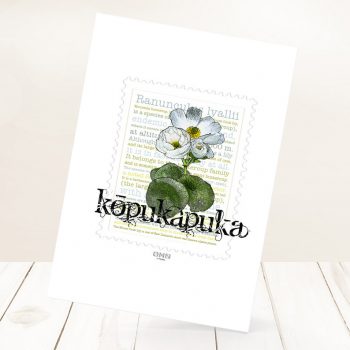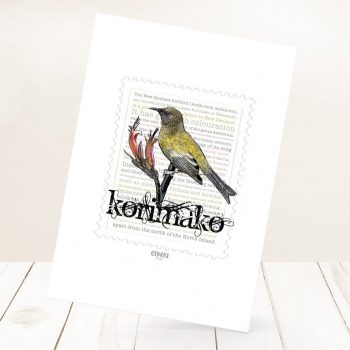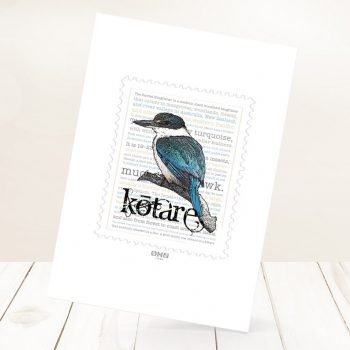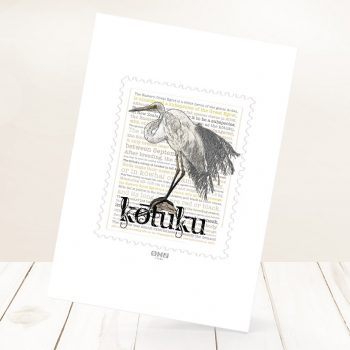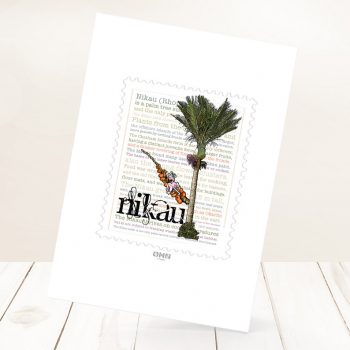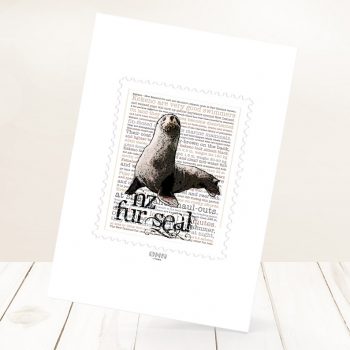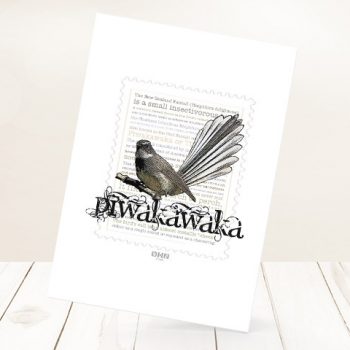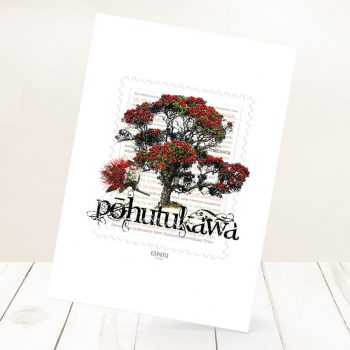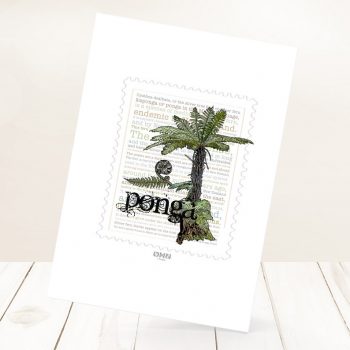Stamp Style Print
-
Kōpukapuka
Print Size: 210mm x 297mm
Material: Card
The Mount Cook Lily or Kōpukapuka is in fact not a lily at all. It belongs to the buttercup family. The Mount Cook Lily is one of New Zealand’s most well known alpine plants.
It grows in sub-alpine to alpine herbfields in the South Island mountains from 700m to 1500m in altitude. It is well adapted to grow in infertile soils and it favours stream banks and damp locations in scrub and grasslands.
$20.00$15.00 Add to cart -
Korimako
$20.00 Add to cartPrint Size: 210mm x 297mm
Material: Card
Bellbirds also known by its Māori names Korimako and Makomako. Korimako are unique to New Zealand. The explorer Captain Cook described of its song “it seemed to be like small bells most exquisitely tuned”.
Their numbers declined sharply in 19 century, For a time it was thought they might vanish from the mainland. Their numbers recovered somewhat from about 1940 onwards.
-
Kōtare
$20.00 Add to cartPrint Size: 210mm x 297mm
Material: Card
The sacred kingfisher, also known by its Māori name Kōtare in New Zealand. They live in a wide range of habitats, including forest, river margins, farmland, lakes, estuaries and rocky coastlines in Australia, New Zealand, and other parts of the western Pacific.
It is called “sacred” for it was said to be a holy bird for Polynesians, who believed it to have control over the waves, and other kingfishers in the southwestern Pacific were ascribed venerable power over the ocean.
-
Kōtuku
$20.00 Add to cartPrint Size: 210mm x 297mm
Material: Card
The Eastern Great Egret is a white heron, it is common in Australia, the South Pacific and Asia. In New Zealand, where it is known as the kōtuku, and highly endangered, with only one breeding site at Okarito Lagoon. The species is protected in Australia under the National Parks and Wildlife Act 1974.
-
Nīkau
Print Size: 210mm x 297mm
Material: Card
The Nīkau is a palm tree endemic to New Zealand, and the only palm native to New Zealand. It primarily occurs in coastal to lowland forest in warmer regions.
Nīkau palms have had importance in Mäori life. The leaves were used to thatch houses, to wrap food before cooking, and to weave into hats, mats, baskets, and leggings for travelling through rough undergrowth.
$20.00$15.00 Add to cart -
-
Piwakawaka
$20.00 Add to cartPrint Size: 210mm x 297mm
Material: Card
The fantail (Maori name: Piwakawaka) is one of New Zealand’s best known birds, as it is one of the few native bird species in New Zealand that has been able to adapt to an environment greatly altered by humans.
In Maori mythology, the piwakawaka is a messenger, bringing news of death from the gods to the people.
-
Pōhutukawa (2017)
$20.00 Add to cartPrint Size: 210mm x 297mm
Material: Card
The Pōhutukawa tree, the iconic Kiwi Christmas tree, which often features on greeting cards and in poems and songs, has become an important symbol for New Zealanders at home and abroad.
Renowned for its vibrant colour and its ability to survive even perched on rocky, precarious cliffs, it has found an important place in New Zealand culture for its strength and beauty.
-
Ponga
Silver Fern or Ponga is a species of medium-sized tree fern, endemic to New Zealand. Its fronds have a distinctive silver underside. Māori laid them silver-side up as track markers for night walking. The koru symbol is inspired by the shape of an unfurling silver fern frond.
The earliest use of the silver fern as an official national symbol was by the New Zealand Army during the Second Boer War. Since then the fern has become one of the most widely recognised symbols of New Zealand.
$20.00$15.00 Add to cart

